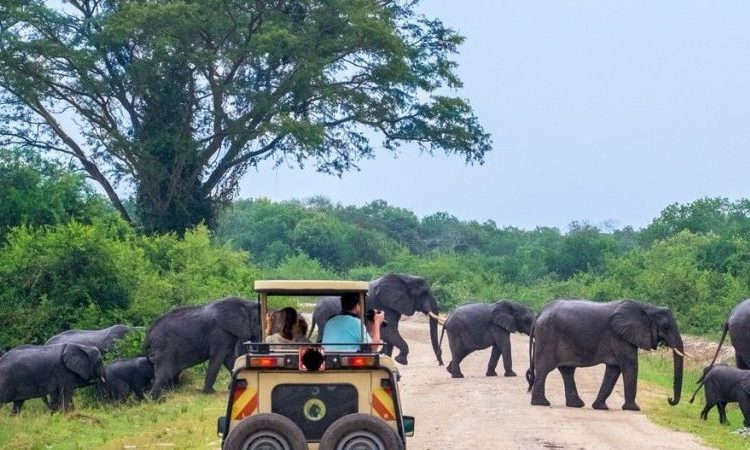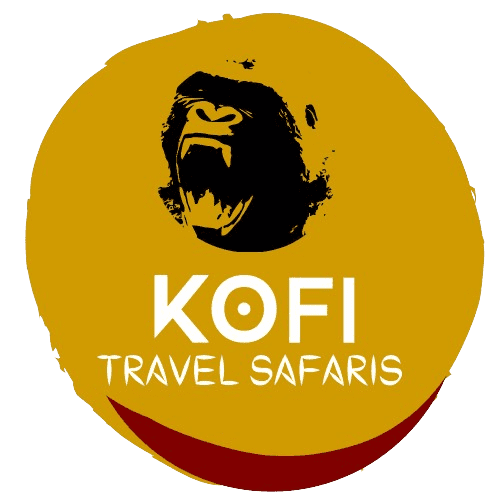Embarking on a self drive safari in Uganda promises an unforgettable adventure, an exhilarating immersion into the heart of Africa’s vibrant tapestry of wildlife and landscapes. But to truly savour this unique experience, understanding the rules of the road within national parks is essential. This comprehensive guide serves as your compass, ensuring your journey flows with the rhythm of the wild while prioritizing safety, respect, and responsible exploration.
Setting the Stage: Understanding the Significance of Park Regulations
Why Rules Matter: National parks in Uganda are sanctuaries for diverse ecosystems and precious wildlife. Driving regulations exist not only to ensure your safety but also to minimize human impact on this delicate balance. By adhering to these guidelines, you become a responsible visitor, an advocate for conservation, and a contributor to the preservation of this irreplaceable heritage.
A Mosaic of Landscapes: From the misty peaks of Bwindi Impenetrable National Park to the vast savannahs of Queen Elizabeth National Park, each protected area in Uganda boasts unique terrain, resident wildlife, and, consequently, specific regulations. Understanding these variations is key to a smooth and enriching safari experience.
Unveiling the Guide: This guide aims to be your trusted companion, equipping you with the knowledge and practical tips necessary to navigate the diverse regulations and driving principles within Uganda’s national parks. It will guide you through essential aspects like park-specific rules, wildlife interaction etiquette, safe driving practices, and responsible tourism principles, ensuring your self-drive safari resonates with respect and wonder.
Charting the Course: Researching Park-Specific Regulations
Navigating the Diverse: Each national park boasts its own set of regulations regarding speed limits, driving restrictions, and wildlife viewing guidelines. Researching and understanding these specific rules prior to your trip is crucial. Some examples include:
- Speed Limits: Queen Elizabeth National Park enforces a 40 km/h speed limit, while Murchison Falls National Park permits slightly higher speeds on specific designated roads.
- Wildlife Viewing: Kidepo Valley National Park requires maintaining a 50-meter distance from elephants and rhinos, while Kibale National Park emphasizes remaining on designated primate viewing trails.
Uganda National Park Driving Rules and Wildlife Viewing Guidelines
| National Park | Speed Limit (km/h) | Wildlife Viewing Guidelines |
|---|---|---|
| Queen Elizabeth National Park | 40 | – Maintain 50m distance from elephants, buffaloes, and lions. |
| Murchison Falls National Park | 40 (general), 50 (designated roads) | – Observe primates from designated viewing platforms. |
| Bwindi Impenetrable National Park | 30 | – Remain on designated trails during gorilla trekking. |
| Mgahinga Gorilla National Park | 30 | – Follow ranger instructions for gorilla and golden monkey viewing. |
| Kidepo Valley National Park | 40 | – Maintain 50m distance from elephants and rhinos. |
| Kibale National Park | 40 | – Observe chimpanzees and redtail monkeys from designated trails. |
| Semliki National Park | 40 | – Maintain 50m distance from elephants and buffaloes. |
| Lake Mburo National Park | 40 | – Observe zebras, giraffes, and antelope from designated viewing points. |
| Rwenzori Mountains National Park | 40 | – Respect restricted areas around chimpanzee and elephant habitats. |
| Sipi Falls National Park | 30 | – Observe waterfalls and birdlife from designated trails and platforms. |
- These are general guidelines, and specific regulations may vary within each park.
- Always check with park authorities for the latest updates and information.
- Respect wildlife by maintaining safe distances and avoiding sudden movements or loud noises.
- Stay on designated roads and tracks to minimize environmental impact.
- Enjoy your safari responsibly and contribute to the conservation of Uganda’s natural heritage.
This table provides a concise overview of speed limits and wildlife viewing guidelines for different national parks in Uganda. You can modify the table to include additional information such as recommended viewing distances for specific animals or special regulations for night driving.
Staying Current: Park regulations can evolve due to seasonal changes or conservation initiatives. Contacting park authorities directly or visiting their official websites ensures you have the most up-to-date information, enabling you to plan your itinerary accordingly.
Time Warp: Park entrance and exit times are often in place to regulate visitor flow and minimize disruption to wildlife. Familiarize yourself with these timings to avoid disappointment and ensure a smooth entry and exit.

Self Drive Safari in Uganda: Guidelines for Respectful Interaction
Maintaining the Buffer Zone: Wildlife thrives on privacy. Maintain a safe distance, tailored to the specific species, for both your safety and their well-being. Recommended distances include:
- Giants Deserve Respect: 50 meters for elephants, rhinos, and buffaloes.
- Predators and Power: 25 meters for lions, leopards, and other predators.
- Smaller Wonders: 10 meters for primates and smaller mammals.
Engine-Off Encounters: When observing wildlife, particularly sensitive species near waterholes or during breeding seasons, consider turning off your engine. This minimizes noise pollution and creates a less intrusive environment for your silent observation.
Feathered Delights and Smaller Wonders: Birdwatching and observing smaller wildlife require a special kind of attentiveness. Avoid sudden movements or loud noises, and use binoculars or telephoto lenses to appreciate them from afar.
Off-Road Etiquette: Treading Lightly on the Earth
Staying on the Path: Designated roads and tracks exist for a reason. Sticking to them minimizes environmental impact, prevents soil erosion, and protects delicate ecosystems from unnecessary disturbance.
Permits and Restrictions: Certain parks require special permits for off-road driving, often restricted to research or conservation activities. Understand and respect these regulations before venturing beyond designated roads.
Restricted Zones: Some areas within parks are designated as sanctuaries or breeding grounds and are strictly off-limits to vehicles. Respect these restricted zones and contribute to preserving these vital spaces for wildlife.
Speed Limits and Safe Driving Practices
Respecting the Pace: Park-specific speed limits are not mere suggestions; they prioritize safety and minimize wildlife disturbance. Adhere to the posted limits, adjusting your speed further based on road conditions and visibility.
Safety First: Implement responsible driving practices like avoiding distractions, wearing seatbelts, and maintaining a safe distance from other vehicles. Remember, you’re sharing the road with wildlife, so be extra cautious and alert.
Adapting to the Path: Road conditions within parks can be unpredictable. Be prepared for winding paths, gravel tracks, and potential wildlife crossings. Adapt your speed accordingly, prioritizing safety and minimizing dust generation, which can disrupt wildlife and other visitors.
Weather Warriors: Remember, Uganda‘s weather can be dynamic. Prepare for rain or dust storms by adjusting your speed and maintaining safe visibility distances. Sudden downpours can turn roads slippery, so exercise caution and be prepared to stop if necessary.
Night Visions: Navigating After Dark
Nighttime Regulations: Night driving within national parks is generally prohibited due to safety concerns and potential disruption to nocturnal wildlife. However, some parks offer authorized night game drives with experienced guides. Ensure you understand the regulations and only embark on authorized night drives with qualified personnel.
Precautions after Dusk: If driving during twilight hours, use headlights responsibly. Avoid high beams, which can disorient and stress nocturnal animals. Consider using red-filtered torches to minimize disturbance while observing wildlife at night.
Spotlight Tales: Spotlights can be helpful for spotting nocturnal creatures during authorized safaris. Use them sparingly and avoid shining them directly into animals’ eyes. Remember, responsible observation is key to minimizing interference with their natural nighttime routines.
Sharing the Stage: Etiquette on the Asphalt
Yielding to the Wonders: When encountering wildlife on the road, yield the right of way. Stop your vehicle at a safe distance and allow animals to cross without any sudden movements or loud noises. This fosters a shared respect and enhances the safety of both you and the wildlife.
Communication Symphony: Utilize hand signals or two-way radios (if permitted) to communicate wildlife sightings to other vehicles. This alerts fellow travelers and allows everyone to enjoy the encounter responsibly.
Respecting the Space: Maintain a safe distance from other vehicles, especially during wildlife sightings. Avoid crowding or blocking their view, allowing everyone to have an equally enriching experience.
Emergency Procedures: Navigating the Unexpected
Seeking Help: Park authorities are your first point of contact in case of emergencies. Memorize or record their contact information before your trip and report any incidents or accidents immediately.
Breakdown Blues: Vehicle breakdowns can happen. Contact park authorities for assistance and follow their instructions. Carrying a spare tire, basic tools, and emergency supplies can be helpful in such situations.
First Aid Essentials: Equip yourself with a basic first-aid kit for minor injuries. Be aware of the potential for mosquito-borne diseases and insect bites, and carry necessary preventive measures and first-aid treatment for such situations.
Understanding the Landscape: Maps and Signage
Mapping Your Journey: Familiarize yourself with park maps and key landmarks before your trip. Understand designated roads, restricted areas, and points of interest. Having offline maps or GPS navigation systems can be beneficial, especially in remote areas.
Following the Guides: Pay close attention to park signage and road markings. They provide vital information on speed limits, directions, restricted zones, and animal crossing areas. Obeying these signs is crucial for your safety and the protection of the park’s ecosystem.
Asking for Help: Don’t hesitate to ask park rangers or experienced guides for clarification or assistance if you’re unsure about directions or park regulations. Their local knowledge can be invaluable in navigating the park smoothly.
Communication Tools: Staying Connected
Staying in Touch: Two-way radios within your travel group can be helpful for communication and coordination, especially in areas with limited mobile network coverage.
Emergency Calls: Ensure your mobile phone has enough charge and is equipped with roaming capabilities if necessary. Familiarize yourself with emergency contact numbers for park authorities and local medical services.
Stay Informed: Park authorities might broadcast important announcements or updates through designated radio frequencies. Tune in periodically to stay informed and ensure you’re aware of any changes or safety concerns.
Responsible Driving Practices: Leaving a Positive Footprint
Eco-Friendly Choices: Minimize your environmental impact by opting for fuel-efficient vehicles, avoiding unnecessary idling, and disposing of waste responsibly. Choose eco-friendly lodges and support sustainable tourism practices within the region.
Sharing the Knowledge: Educate fellow travelers and share information about responsible driving practices within national parks. By advocating for responsible tourism, you contribute to the long-term conservation of these precious ecosystems.
Leave No Trace: Follow the principle of “leave no trace” during your journey. Avoid littering, minimize disturbances to natural habitats, and respect local customs and traditions. Your responsible actions can inspire others and contribute to a positive impact on the environment and local communities.
Closing Thoughts: Embracing the Adventure with Confidence
Navigating the wild tapestry of Uganda in your self-drive safari promises an unforgettable adventure, teeming with breathtaking landscapes, captivating wildlife encounters, and the thrill of exploration. By equipping yourself with the knowledge and understanding of driving rules and regulations within national parks, you ensure your journey is not only exhilarating but also respectful, safe, and enriching for both you and the delicate ecosystems you traverse.
Remember, these guidelines are not merely restrictions; they are pathways to a deeper connection with Uganda’s wilderness. By adhering to them, you become a responsible ambassador, a voice for conservation, and a guardian of this irreplaceable heritage. Embrace the unexpected, observe with patience and respect, and leave only footprints of wonder on the path you forge. May your self-drive safari be a tapestry woven with the memories of majestic encounters, the awe of nature’s symphony, and the satisfaction of being a responsible visitor in this precious land.
Embrace the Adventure:
- Step into the unknown: Leave anxieties behind and embrace the unexpected twists and turns your self-drive safari presents. Every bend in the road holds the potential for a breathtaking encounter, a whispered secret of the wild waiting to be unveiled.
- Respect the rhythm of nature: Remember, you are a guest in these sacred landscapes. Observe wildlife with patience and from a safe distance, minimizing intrusion and allowing them to thrive in their natural rhythm.
- Become a guardian of the wild: Every responsible action matters. Follow park regulations, minimize your environmental impact, and advocate for sustainable tourism practices. Be a voice for the voiceless, ensuring future generations can experience the same magic you witness today.
- Treasure the memories: As you navigate the dusty tracks and wind through verdant landscapes, capture the essence of your journey not just through photographs, but in your heart. Let the echoes of the wild symphony reverberate within you, a constant reminder of the awe-inspiring beauty you experienced.
With this guide as your compass and respect as your guiding principle, embark on your self-drive safari in Uganda with confidence. This is your invitation to become a witness, a guardian, and an explorer, weaving your own tale of wonder into the rich tapestry of this unforgettable land. Let the adventure begin!



One Response
helloI really like your writing so a lot share we keep up a correspondence extra approximately your post on AOL I need an expert in this house to unravel my problem May be that is you Taking a look ahead to see you